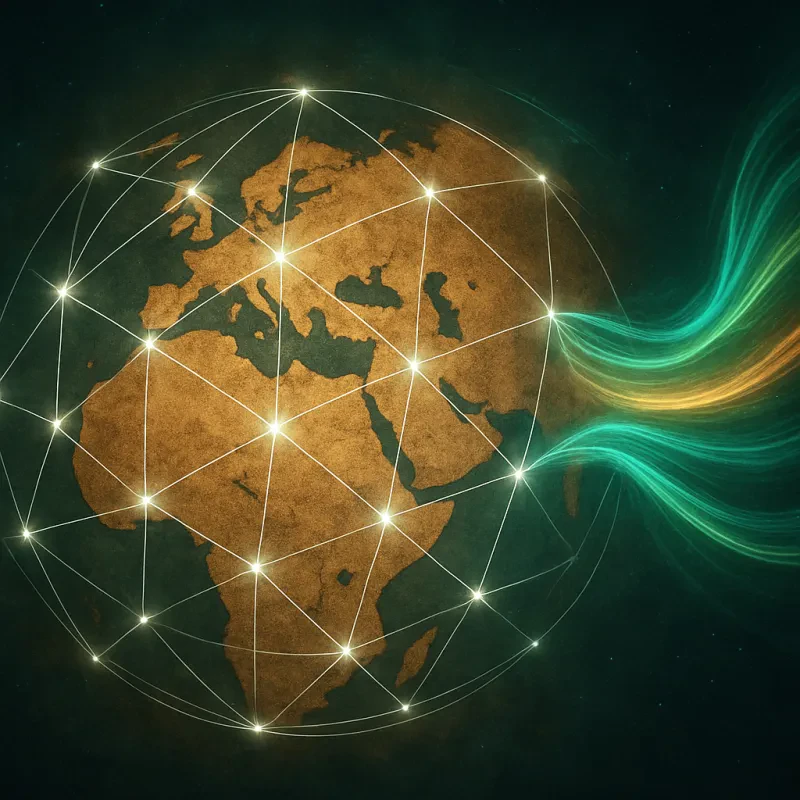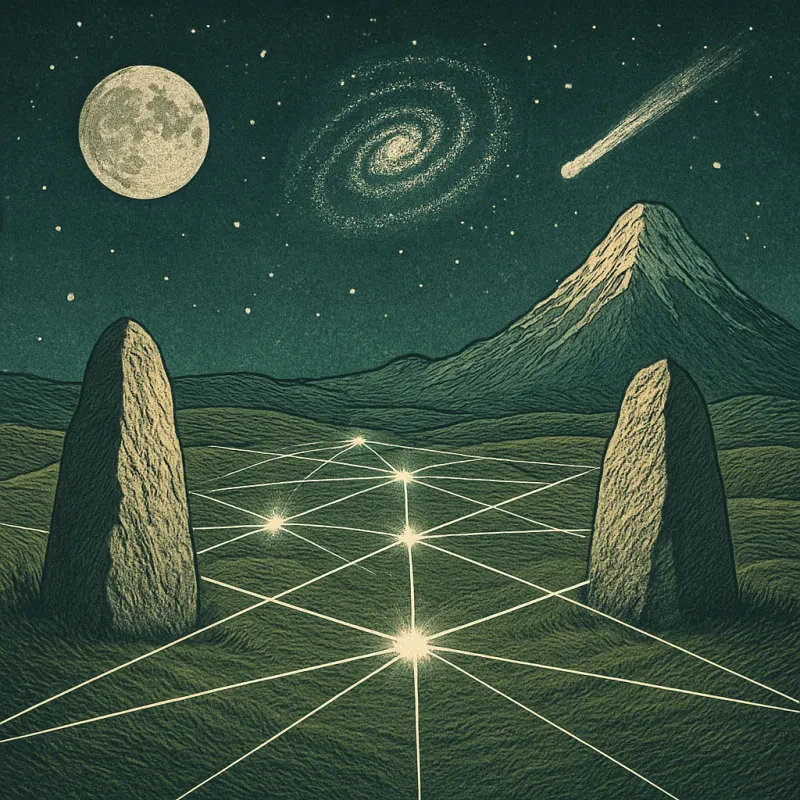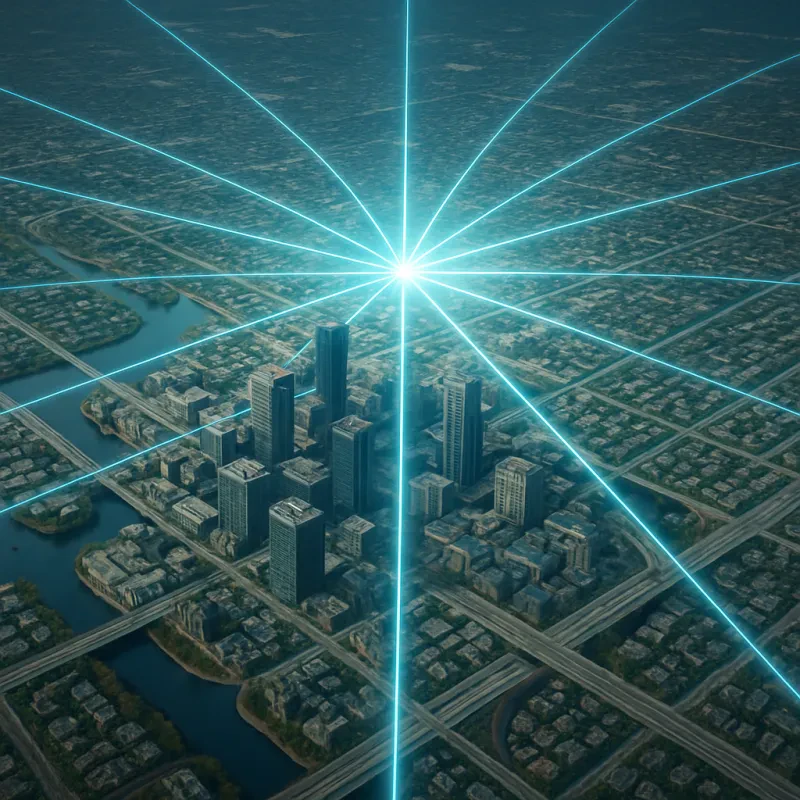Have you ever heard of ley lines? These mysterious alignments are thought to connect ancient landmarks, and many believe they hold special significance. Imagine a hidden network crisscrossing the landscape, guiding ancient travelers and perhaps even energy flows. When we talk about ley lines and Roman roads together, we dive into a fascinating world where history and geometry intersect.
Ley lines are believed to represent paths of energy that people have walked and lived alongside for centuries. Some enthusiasts argue these lines can influence everything from spiritual gatherings to the ancient routes of trade and communication. Think about it: the Romans were masters of road-building, creating extensive networks for trade and military movements. When you overlay the concept of ley lines with Roman roads, you start to see a pattern where the roads weren't just functional; they might have had a greater purpose.
Many ancient sites and rock formations line up along these ley lines. For instance, if you look at certain Roman roads, you might find them running parallel to or intersecting with these energy lines. It makes you wonder which came first: the road or the ley line? Did the Romans unknowingly harness these natural energies to create their efficient pathways?
Exploring ley lines and Roman roads isn’t just about looking at old maps; it's about connecting with history in a really hands-on way. Whether you're hiking these ancient paths or studying their layouts, you get a sense of the people who walked them before you. It’s like tracing your fingers over the same lines drawn in history, feeling the echoes of those ancient journeys.
The Journey of Ancient Roman Roads
What’s truly remarkable about these roads is their construction. The Romans were known for their engineering skills, and their roads reflect this. They built them to last, using layers of materials to create a solid, durable foundation. This means that many Roman roads have survived to this day, serving as historical touchpoints for exploration and discovery.
But why should we care about these roads today? Well, they tell us much about the Roman Empire's reach and influence. The integration of Ley Lines and Roman Roads opens up a conversation about ancient beliefs and how the Romans may have used these roads not just for travel but also for spiritual or energetic purposes. Picture this: are these ancient routes aligned with Ley Lines, which are said to be paths of energy that run across the earth? It’s a captivating idea, sparking curiosity about how our ancestors may have moved through both physical and spiritual landscapes.
As we explore Ley Lines and Roman Roads together, we can appreciate the wisdom and foresight of those ancient engineers. Their roads were more than just paths; they were symbols of connection, commerce, and community. Each piece of stone laid by Roman hands carries stories and insights into the daily lives and journeys of countless people.
Connecting Cultures Through History
When we talk about Ley Lines and Roman Roads, we’re diving into the fascinating ways ancient cultures connected with the land and each other. Ley Lines are thought to be invisible pathways that run across the Earth, connecting places of historical significance. On the other hand, Roman Roads were the backbone of the Roman Empire, facilitating trade, communication, and movement across vast distances.
These two concepts weave an interesting tapestry of human history. Roman Roads weren’t just routes for soldiers or merchants; they often intersected with sites that hold spiritual or cultural significance. Imagine traveling along a Roman Road and discovering a Ley Line stretching out nearby, linking you to a sacred site or ancient monument. It’s easy to see how these connections shaped the lives of those who walked them.
Exploring Ley Lines and Roman Roads together opens up a world of wonder. You can walk in the footsteps of those before us, feeling a sense of connection to history. Whether you’re an avid hiker or just curious about ancient cultures, following these paths can give you unique insights into how people interacted with their environment and each other.
Plus, it’s pretty cool to think that the roads built centuries ago still hold relevance today. Travelers find joy in tracing the same routes, while Ley Lines inspire discussions about energy and the earth's mysteries. Together, they invite us to explore not just the physical routes, but also the stories and connections that have shaped our world.
How Ley Lines Relate to Roman Roads
When diving into the fascinating world of ancient pathways, you'll quickly notice the intriguing connection between Ley Lines and Roman Roads. Both of these elements reflect the way early civilizations navigated their landscapes, but they have different purposes and origins. While Roman Roads were meticulously constructed for trade, military use, and transportation, Ley Lines are more about the spiritual and energetic connections believed to flow through the earth.
Roman Roads were built with incredible engineering prowess, often featuring a layered structure that included gravel and stones, which made them durable and efficient for travel. These roads stretched across vast distances, linking cities and providing a reliable means for armies and merchants to traverse the terrain. As you explore the remains of these roads today, you'll see how they follow strategic paths, connecting significant sites and ensuring the movement of people and goods was as seamless as possible.
On the flip side, Ley Lines are more mystical. These hypothetical alignments connect various sacred sites, monuments, and natural features, such as hills or springs. Many believe these lines represent ancient pathways of energy, serving as spiritual conduits for various cultures. While there's still a debate about their existence, enthusiasts argue that they reveal the interconnectedness of the earth and the human experience, much like how Roman Roads connected communities.
What’s truly fascinating is how Ley Lines and Roman Roads can often overlap. In many cases, ancient Romans may have chosen their road locations based on existing Ley Lines or sacred sites. This overlap goes beyond physical routes; it hints at a time when practical and spiritual journeys were intertwined. So, as you stroll along these old Roman paths, take a moment to ponder the larger forces at play and how Ley Lines and Roman Roads both shaped the world we know today.


